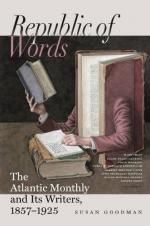The founders of the early American civilization bear various titles: they are called “The Master of the Mountain,” “The Heart of the Lake,” “The Master of the Azure Surface,” and the like. Even in the native traditions, the questions are often asked: “Whence came these men?” “Under what climate were they born?” One authority answers thus mysteriously: “They have clearly come from the other shore of the sea,—from the place which is called ’Camuhifal,’—The place where is shadow." Why may not this singular expression refer to a Northern country,—a place where is a long shadow, a winter-night?
A singular characteristic of the ancient Indian legends is the mingling of two separate courses of tradition. In their poetic conceptions, and perhaps under the hands of their priests, the old myths of the Creation are constantly confused with the accounts of the first periods of their civilization.
The following is the most ancient legend of the Creation, from the MSS. of Chichicastenango, in the Quiche text: “When all that was necessary to be created in heaven and on earth was finished, the heaven being formed, its angles measured and lined, its limits fixed, the lines and parallels put in their place in heaven and on earth, heaven found itself created, and Heaven it was called by the Creator and Maker, the Father and Mother of Life and Existence, ... the Mother of Thought and Wisdom, the excellence of all that is in heaven and on earth, in the lakes or the sea. It is thus that he called himself, when all was tranquil and calm, when all was peaceable and silent, when nothing had movement in the void of the heavens.”—Vol. I. p. 48.
In the narrative of the succeeding work of creation, says M. de Bourbourg, there is always a double sense. Creation and life are civilization; the silence and calm of Nature before the existence of animated beings are the calm and tranquillity of Ocean, over which a sail is flying towards an unknown shore; and the first aspect of the shores of America, with its mighty mountains and great rivers, is confounded with the first appearance of the earth from the chaos of waters.
“This is the first word,” says the Quiche text. “There were neither men, nor animals, nor birds, nor fishes, nor wood, nor stones, nor valleys, nor herbs, nor forests. There was only the heaven. The image of the earth did not yet show itself. There was only the sea, on all sides surrounded by the heaven ... Nothing had motion, and not the least sigh agitated the air ... In the midst of this calm and this tranquillity, was only the Father and the Maker, in the obscurity of the night; there were only the Fathers and Generators on the whitening water, and they were clad in azure raiment... And it is on account of them that heaven exists, and exists equally the Heart of Heaven, which is the name of God.”—Vol. I. p. 51. [B]
[Footnote B: Compare the Hindoo conception, translated from one of the old Vedic legends, in Bunsen’s Philosophy of History:—




